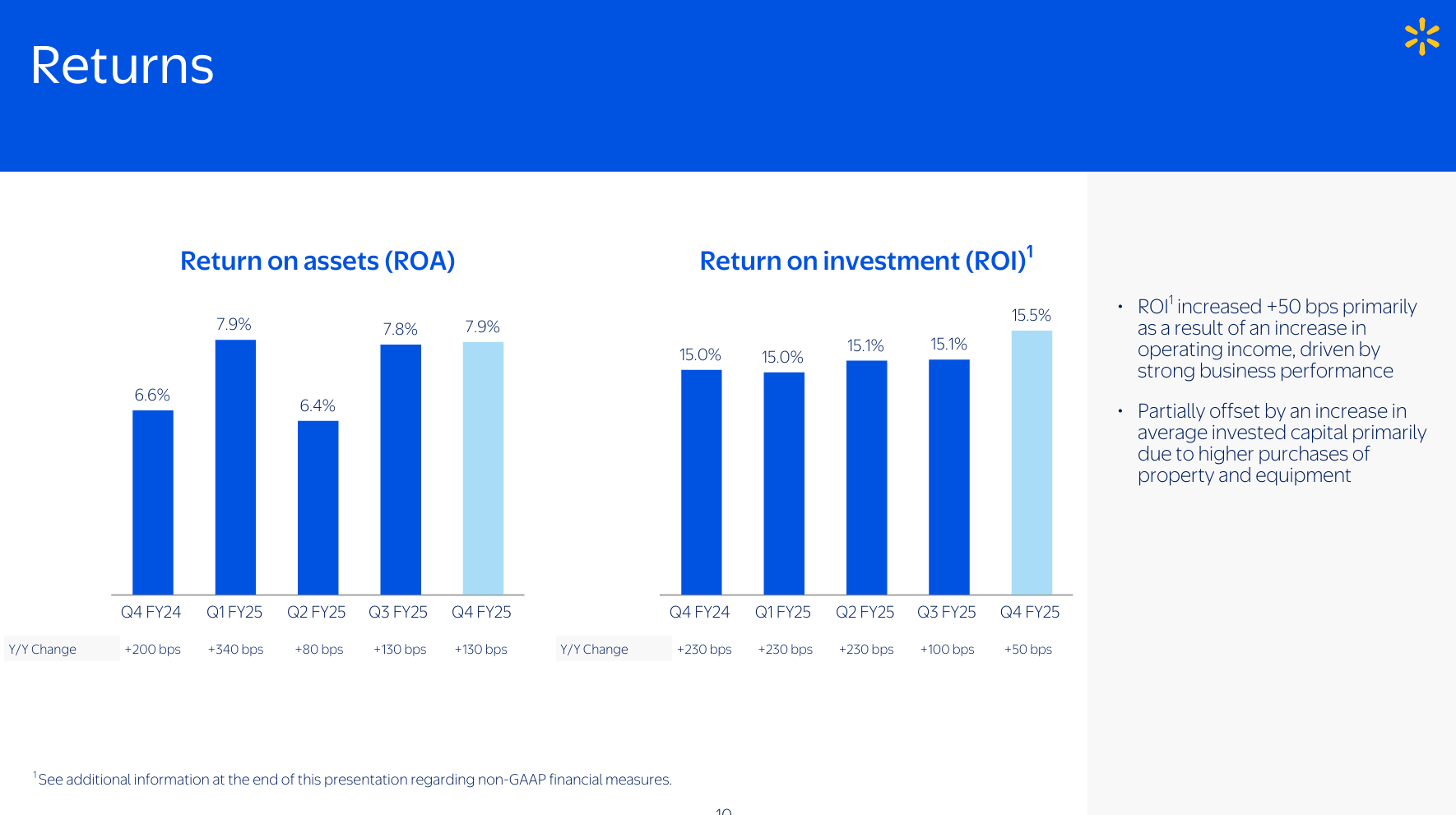Walmart continues to bet on leveraging AI, optimizing its supply chain and developing a host of related businesses that'll grow operating profits.
The retail giant reported fourth quarter earnings of 65 cents a share on revenue of $180.6 billion, up 4.1%. For Walmart, it's the first time its quarterly sales were below Amazon sales. For fiscal 2025, Walmart reported earnings of $2.41 a share on revenue of $681 billion.
Walmart projected fiscal 2026 net sales growth of 3% to 4% with operating income growing from 3.5% to 5.5%. Capital expenditure will be between 3% and 3.5% of sales as Walmart invests in technology to optimize its supply chain, remodel stores and open new ones.

Here's a look at what Walmart CEO Doug McMillon and CFO John David Rainey had to say on the earnings conference call.
Walmart has introduced Wally, a new AI agent for the company's merchants. "Wally is learning to help us get to the root cause of issues related to things like out of stocks or overstocks with more accuracy and speed," said McMillon.
Developers at Walmart are leveraging AI for coding and deployments and the company saved 4 million developers hours last year. This year, all of the AI coding tools will be available to all developers in North America and India.
- Sam's Club CEO Nicholas on AI, frictionless commerce, focus on members
- Walmart's big tech, AI bets paying off going into 2024 holiday shopping
Walmart's complementary businesses will grow operating profits. The company's global advertising business delivered annual sales of $4.4 billion, up 27% from a year ago. Walmart US Marketplace revenue was up 37% and 45% of orders were filled by Walmart Fulfillment Services. And global membership income was up 21% to $3.8 billion for fiscal 2025. These businesses will grow operating profits faster than sales.
Walmart data is becoming a business. Rainey said: "Within data analytics and insights, Walmart Data Ventures continues to grow rapidly with net sales up double digits. Our client base nearly doubled over the past year, and we're excited about continuing to broaden our reach to new markets with the launch of the platform in Canada."
Walmart's business is 18% e-commerce today and the percentage will increase in the future. Since the selling, general and administrative expenses (SG&A) related to an e-commerce transaction are higher than physical retail, Walmart is betting on automation. Rainey said:
"As you think about our cost structure going forward, one of the big drivers is going to be the improvements that we see in supply chain automation. We're already seeing that. We're encouraged by some of the early productivity metrics. But still today, less than half of the stores in the U.S. are served fully by automation. And so, there's a lot of benefit still to come here as we automate our supply chain as we continue to automate our stores that will drive improvements in SG&A."
Walmart will highlight its investments in supply chain automation in April at its investor conference, said McMillon.
The retailer is honing its delivery game with same-day pharmacy delivery and various shipping offers at Walmart and Sam's Club. McMillon said Walmart is taking the lessons from markets such as China and applying them elsewhere.
Walmart is also trying to lower its cost to serve. Rainey said drivers are aiming to deliver to more houses on a street, add volume and create more dense networks.
Walmart's return on investment improved 50 basis points to 15.5%, a level that was last achieved in 2016.

The company is prepped for a potential volatile economy and customers are looking for value. Rainey said: "Our outlook assumes a relatively stable macroeconomic environment but acknowledges that there are still uncertainties related to consumer behavior and global economic and geopolitical conditions. As a result, we've taken a similar approach to our initial guidance view for the year as we have in the past couple of years, balancing known risk with what we can control. We remain confident that Walmart is well positioned to navigate as it has over the last several years."
Tariffs. Like most enterprises, part of the potential supply chain volatility revolves around tariffs. McMillon said: "tariffs are something we've managed for many years, we'll just continue to manage that. We've got a great team. We know how to do that. We can't predict what will happen in the future, but we can manage it really well. And we're wired to try and save people money. So that will be our ultimate goal."


